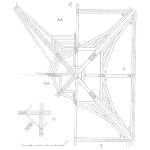
In the last article, we learned how to determine the coefficients of a predictive model for 2-level screening designs. It is more complex to determine model coefficients for multi-level experiments so for those, we rely on statistical methods software.
In this article, we look at using the model to develop solutions. So that we learn the basics, we first use some simple algebra to find a solution. Then, in the next article, we will explore some common tools that are found in DOE software programs to help uncover solutions. [Read more…]













